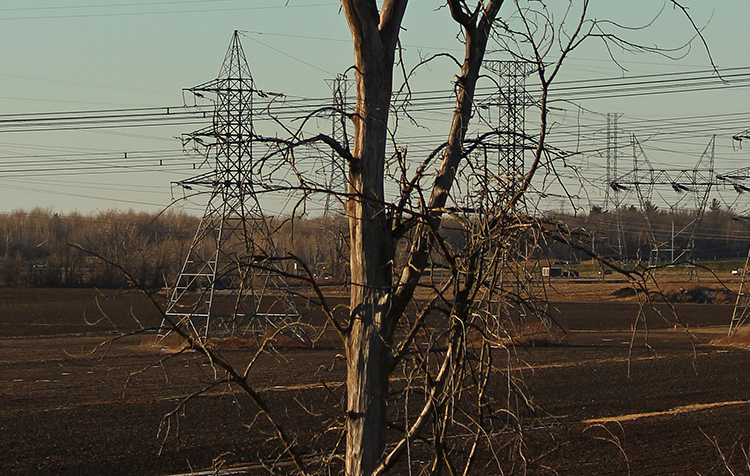Life is better in a landscape dotted with trees. Trees provide a host of benefits for both property owners and the environment. Adding shade trees to your lot can save up to 30% on the cost of air conditioning during the hottest months of the year. In contrast, planting a windbreak using sturdy, leafy trees can provide savings on heating bills in the winter months by reducing the impact of icy winds.
Sometimes, however, weather conditions, improper pruning, soil compactions, pests, diseases or other factors can affect the health of your trees, resulting in poor growth or even tree death. However, if you notice a tree on your property that looks unhealthy, there are some things you can do to bring it back to health.
First, Know What a Dying Tree Looks Like
The first step in saving a tree on your property is to understand what a diseased or dying tree looks like. Sometimes it can be obvious, with tree branches dying and foliage turning brown, or pests active on the tree. Other times, it can be more difficult to discern. Understanding the signs can help you to save the tree or to have it properly removed before it causes a hazard to life or property.
Bark That Is Cracked or Brittle
Vertical cracks or bark that is missing can be a sign that your tree is dying. Also, cracks can predispose your tree to weakness, which can be hazardous in the event of severe weather.
Lacking Healthy Leaves
If your tree is evergreen and most of the needles are brown or it is deciduous and has very few green leaves, it is probably unhealthy. If the brown leaves are still on the tree when winter is well underway, the tree is definitely stressed. Alternatively, yellowing or thinning foliage can also be indicative of root damage or pest infestation.
Presence of Dead Wood
Many dead branches on or around the tree can signify a sick or dying tree. Again, dead wood means the tree is weakened and can pose a hazard to you or your property.
Active Pest Infestation
If you can see pests such as carpenter ants actively moving on your tree, you need to be concerned. Pests often infest trees that are in the process of dying. Other pests such as mushrooms, cankers or galls can signify that bacteria or fungi have taken a toll on the tree’s health.
One last note: If you are unsure if your tree is still alive, use a knife to scratch beneath the surface of the outer bark. If it is green beneath the scratch, then it still has life. If it is brown or black, the tree is dead.
Five Tips to Save a Dying Tree
Before employing any of these tips, it would be wise to get the advice of a certified arborist to ensure you know the underlying reason why your tree is struggling to thrive. However, these are some general steps that might help you to restore your tree’s health.
1. Fix Moisture Issues
While most mature trees can handle some amount of water fluctuation ‚Äî either too much or too little ‚Äî smaller and younger trees can suffer from either over- or under-watering. Sometimes, problems are caused by poor drainage around the tree’s roots. Look for pooling water or mulch that is piled too close to the trunk, leading to growth of fungi and moss. If you suspect overwatering is a problem, correct the drainage around the root system. If underwatering is the culprit, set up a sprinkler system on a timer to ensure your tree gets the water it needs.
2. Mulch Properly
Mulch can be an important way to ensure your tree has enough water in hot or windy conditions, but too much is not a good thing. Mulch can actually smother the tree’s roots and contribute to trunk rot. As mentioned above, mulch can also promote the proliferation of bacteria and fungi, which can contribute to reduced vitality. Do not build up a ‚Äúmulch mound‚Äù around your tree; make sure there are at least six inches of clearance between the trunk and the beginning of the mulch base and use no more than four to five inches of mulch.
3. Fertilize Wisely
As in many things, more is not better when it comes to fertilizer. Too much fertilizer can allow bacteria and pests to proliferate at the roots of your tree, bringing a host of health issues. In addition, over-fertilizing can burn tree roots and the trunk, contributing to tree stress and interfering with proper nutrient absorption.
4. Prune Dead Wood
If you suspect your tree has an illness that has contributed to dead or dying branches, be sure to prune diseased wood and bark to keep the disease from moving elsewhere in the tree. When you do this, make sure to sterilize your pruning instruments to make sure you do not transfer pests or disease to other trees in your landscape.
5. Call the Experts
For best results, you should consult with a certified arborist to determine the cause of your tree’s poor health and the proper treatment. Arborists are skilled at treating tree diseases and providing proper pruning and even tree removal if it is necessary ‚Äî without risking safety or damaging property.
Proper Tree Care Can Help You Avoid Tree Removal
Taking proper care of the trees in your landscape will keep your landscape beautiful, increase property value, and ensure that an unhealthy tree does not pose a hazard to your life or property. If a tree is damaged or dying and is in close proximity to power lines or other utility infrastructure, the local utility company may have to intervene and remove it for safety reasons.
Townsend Tree Service is a leading, multi-state provider of expert tree trimming, line clearing, and vegetation-management services. Click here to learn more about how we help utilities provide reliable service to their customers through proper vegetation management.
